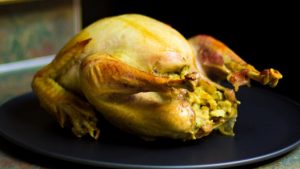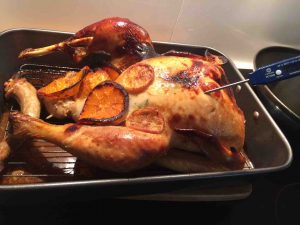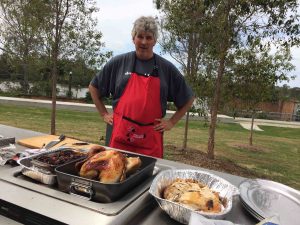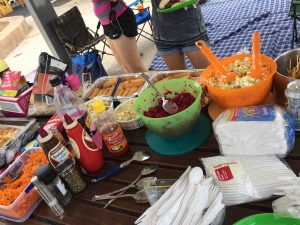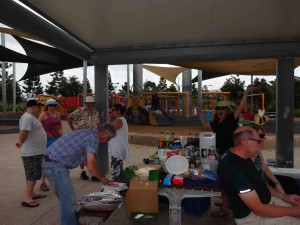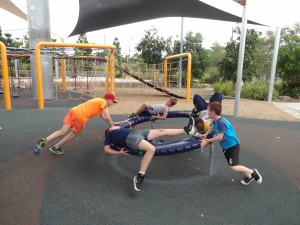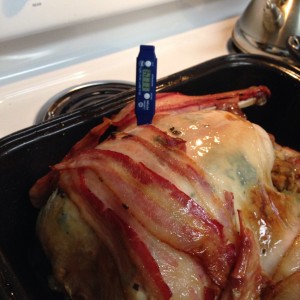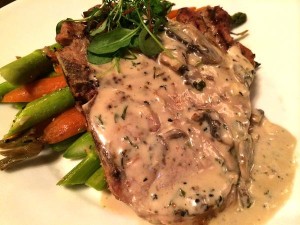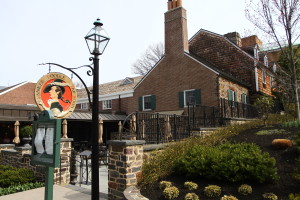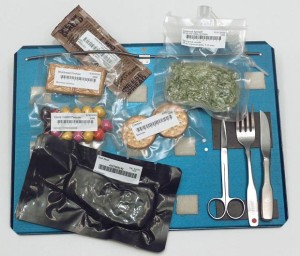Yesterday, while picking Sorenne up from school I asked several of the attendees at our Thanksgiving feast in the park on Saturday, if there was any intestinal upset.
All clear.
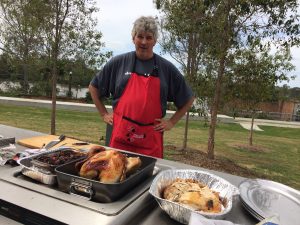 I was especially concerned about C. perfringens, what with the prior cooking of the turkeys and the transporting to the park, and the outside temp of90F as we move into summer, but I would have heard by Sunday.
I was especially concerned about C. perfringens, what with the prior cooking of the turkeys and the transporting to the park, and the outside temp of90F as we move into summer, but I would have heard by Sunday.
The U.S. Centers for Disease Control reports that in November 2015, the North Carolina Division of Public Health was notified by the Pitt County Health Department (PCHD) that approximately 40 persons who attended a catered company Thanksgiving lunch the previous day were ill with diarrhea and abdominal pain. The North Carolina Division of Public Health and PCHD worked together to investigate the source of illness and implement control measures.
Within hours of notification, investigators developed and distributed an online survey to all lunch attendees regarding symptoms and foods consumed and initiated a cohort study.
A case of illness was defined as abdominal pain or diarrhea in a lunch attendee with illness onset <24 hours after the event. Risk ratios (RRs) and 95% confidence intervals (CIs) were estimated for all menu items. Among 80 attendees, 58 (73%) completed the survey, including 44 respondents (76%) who reported illnesses meeting the case definition; among these, 41 (93%) reported diarrhea, and 40 (91%) reported abdominal pain. There were no hospitalizations. Symptom onset began a median of 13 hours after lunch (range = 1–22 hours). Risk for illness among persons who ate turkey or stuffing (38 of 44; 86%), which were plated and served together, was significantly higher than risk for illness among those who did not eat turkey or stuffing (six of 14; 43%) (RR = 2.02; 95% CI = 1.09–3.73).
PCHD collected stool specimens from ill persons and samples of leftover food from the company that hosted the lunch. Stool specimens were tested for norovirus and bacterial enteric pathogens at the North Carolina State Laboratory for Public Health. Based on reported symptoms and short interval between the lunch and symptom onset, a toxin was suspected as the cause of the outbreak; therefore, five stool specimens from ill persons and 20 food samples were submitted to CDC for Clostridium perfringens detection.
 Stools were tested for C. perfringens enterotoxin (CPE) using reversed passive latex agglutination. Stool culture and enumeration of C. perfringens colony forming units (CFU) were performed for five samples of foods implicated by the epidemiologic investigation (one stuffing sample and four turkey samples). Because meat is the most common source of C. perfringens outbreaks (1), one ham sample also was analyzed, although consumption of ham was not associated with an increased risk for illness. CPE was detected in all five stool specimens. C. perfringens containing the C. perfringens enterotoxin gene (cpe) was recovered from all five stool specimens and from all four turkey samples; one turkey sample contained >105 CFU/g. C. perfringens was not recovered from samples of other foods. No other pathogens were detected in stool specimens. Collectively, laboratory results met CDC guidelines for confirming C. perfringens as the outbreak source (3).
Stools were tested for C. perfringens enterotoxin (CPE) using reversed passive latex agglutination. Stool culture and enumeration of C. perfringens colony forming units (CFU) were performed for five samples of foods implicated by the epidemiologic investigation (one stuffing sample and four turkey samples). Because meat is the most common source of C. perfringens outbreaks (1), one ham sample also was analyzed, although consumption of ham was not associated with an increased risk for illness. CPE was detected in all five stool specimens. C. perfringens containing the C. perfringens enterotoxin gene (cpe) was recovered from all five stool specimens and from all four turkey samples; one turkey sample contained >105 CFU/g. C. perfringens was not recovered from samples of other foods. No other pathogens were detected in stool specimens. Collectively, laboratory results met CDC guidelines for confirming C. perfringens as the outbreak source (3).
PCHD environmental health specialists interviewed the caterer about food handling and preparation practices. The North Carolina Food Code requires that all commercial caterers operate in a facility that has been inspected for compliance and permitted by the regulatory authority (4). The caterer had previously maintained a permitted facility, but reported having prepared the lunch food served at this event in an uninspected, residential kitchen. Turkeys were cooked approximately 10 hours before lunch, placed in warming pans, and plated in individual servings. Food was then delivered by automobile, which required multiple trips. After cooking and during transport, food sat either in warming pans or at ambient temperature for up to 8 hours. No temperature monitoring was conducted after cooking.
C. perfringens toxicoinfection (a foodborne illness caused by ingestion of toxin-producing bacteria) is often associated with consumption of meat that has been improperly prepared and handled (1,2). Because diagnostic testing is not widely available, C. perfringens can go undetected as a cause of foodborne illness outbreaks (2,3,5). Diagnostic testing to assist with outbreak source identification is useful to corroborate epidemiologic information, document disease prevalence, and guide prevention recommendations.
Epidemiologic, laboratory, and environmental evidence indicate that this outbreak was caused by consumption of turkey prepared by a commercial caterer operating in an unpermitted kitchen. Inadequate facilities, extended time between turkey preparation and consumption, and failure to monitor and control temperature before and during transport resulted in an anerobic environment conducive to C. perfringens spore germination and growth (6). Prompt local health department response, use of an online survey, and rapid collaboration between local, state, and federal public health agencies were instrumental in identifying the outbreak source quickly and preventing additional cases.
These findings confirm the need for commercial food preparers to adhere to existing food safety regulations (4), including use of permitted facilities and having a certified kitchen manager on staff. Caterers should be aware of the risks associated with improper storage of prepared food for long periods and the importance of temperature monitoring and regulation during food preparation and handling.

